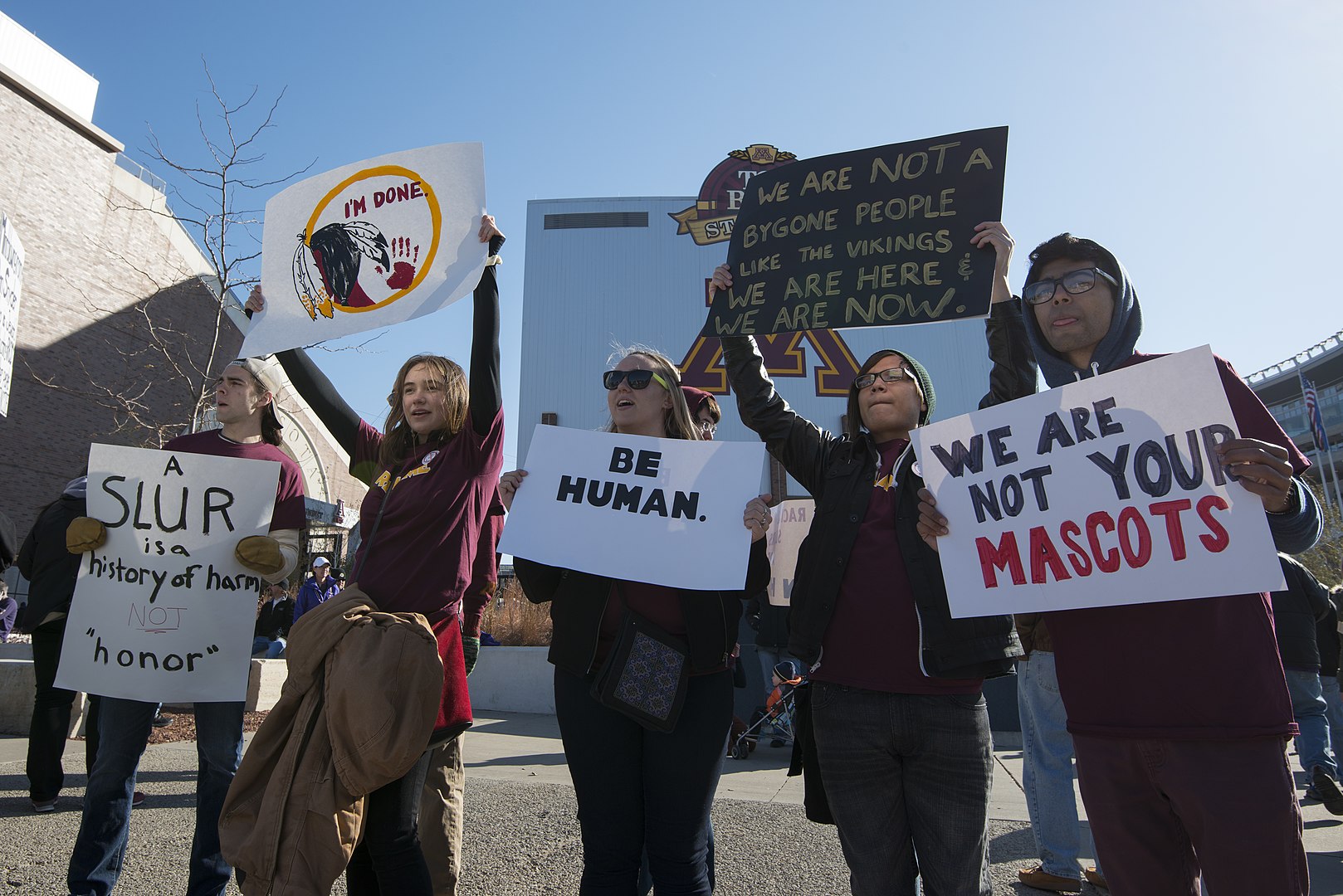
- Details
- By Justin Mark Hideaki Salisbury
Native American mascots contribute to the oppression of Native Americans throughout our country, and they create an externality on all oppressed minorities by encouraging a culture of stereotyping.
Frequently, with Native American mascots, these mascots lead people to think of us as inherently threatening. This creates barriers to people’s perceptions of our employability in certain jobs, potential threats in situations of personal safety, and many other problems. According to the CDC, Native Americans are killed by police at a higher rate per capita than African Americans, though these police killings rarely make the largest corporate news outlets. Use of Native American mascots creates problems for us.
Want more Native News? Get the free daily newsletter today.
There are special sporting arrangements for people with disabilities, which some people call “adaptive sports.” National associations or leagues may exist to govern the sports, such as the USA Deaf Sports Federation, the National Wheelchair Basketball Association, and the National Beep Baseball Association. In these disability sport circles, sometimes there are permanent teams which have mascots. These mascots may be Native mascots.
The aim of this article is not to disparage schools personally, nor is it to get caught up in trying to blame, defend, or justify one particular team.
But for the sake of demonstrating that the issue exists, I will name the Oklahoma School for the Deaf Indians, the Alabama School for the Deaf Silent Warriors, the Alabama School for the Blind Redskins, and the Knox Redskins Unified Flag Football in Indiana. Earlier this year, the North Haven (Connecticut) Board of Education voted unanimously to retire its high school Indians mascot, which has been used on its Girls Wheelchair Sports team. These mascots can exist at segregated schools for students with disabilities or integrated schools that just happen to have disability sports. They can also exist in leagues not tied to schools.
In some ways, people with all kinds of disabilities stick together when we need to advocate for something that affects us all. In other ways—perhaps more frequently—we end up organizing in smaller networks relevant to our disability or similar disabilities. It is somewhat like how we, as Native people, may work with our nation or tribe on certain things and work with all Native people on other things. People competing against each other in disability sports typically have similar disabilities or kinds of disabilities, so the stakeholder groups closest to them are based on disability subgroups.
Those of us who are both Native and disabled live at the intersection of those two identities. Native people with disabilities face barriers everywhere we go. If we look at education and employment, these areas largely focus on the kind of function that we are expected to fulfill in society. Native people know about the constant efforts of essentially all other ethnic groups to try to erase us. As Native people, we are often perceived as threatening no matter where we go. Many of the kinds of jobs that the settlers want us to fulfill, if we must exist and participate in society, are ones of servitude or ones where being perceived as threatening is helpful, such as being a security guard or soldier. If we limit Native people to only roles where we are perceived as threatening, people with disabilities are essentially the opposite of the people expected for those jobs. If Native people are threatening and people with disabilities are not threatening, then Native people with disabilities are the sum of two opposites: nothing.
Since Native mascots encourage people to think of us as threatening, using Native mascots in disability sports actively encourages people to embrace a stereotype that leaves little room left in society for Native people with disabilities to play a role. Native mascots take away what roles are still left for people with disabilities under the current attitude structure of our society.
I do my best to advocate for change in the public attitudes toward Native people and people with disabilities. Currently, Native people with disabilities are squeezed between both sets of prejudice. We can improve conditions for Native people with disabilities by changing either one, but I want to change both. I am not angry, and I am not offended. I avoid those terms because “angry” and “offended” can lead people to perceive me as threatening, which reproduces the same problem as the mascots. I do hope that disability sports organizations can eliminate Native mascots in disability sports to help make sure that there is a space for people like me in society.
Justin Mark Hideaki Salisbury (Butterfly Clan of Mi’kmaq) is a graduate student in educational leadership and policy studies at the University of Vermont. He has worked as a teacher, therapist, design laboratory assistant, and legislative aide.
Help us defend tribal sovereignty.
At Native News Online, our mission is rooted in telling the stories that strengthen sovereignty and uplift Indigenous voices — not just at year’s end, but every single day.
Because of your generosity last year, we were able to keep our reporters on the ground in tribal communities, at national gatherings and in the halls of Congress — covering the issues that matter most to Indian Country: sovereignty, culture, education, health and economic opportunity.
That support sustained us through a tough year in 2025. Now, as we look to the year ahead, we need your help right now to ensure warrior journalism remains strong — reporting that defends tribal sovereignty, amplifies Native truth, and holds power accountable.
 The stakes couldn't be higher. Your support keeps Native voices heard, Native stories told and Native sovereignty defended.
The stakes couldn't be higher. Your support keeps Native voices heard, Native stories told and Native sovereignty defended.
Stand with Warrior Journalism today.
Levi Rickert (Potawatomi), Editor & Publisher
